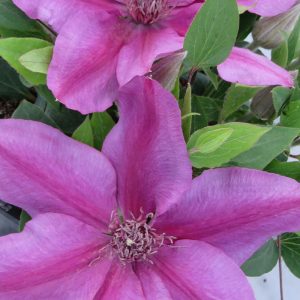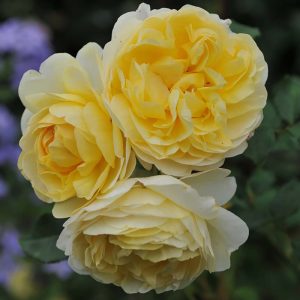Description
Rhododendron ‘Roseum Elegans’ is a popular and reliable variety of rhododendron in the UK. It is an evergreen shrub with large, rosy-lavender flowers that have reddish-brown spotting and mature to a soft pink color. The plant has dense, olive green leaves and a spreading habit, growing up to 6 feet in height over a period of 10 years. This rhododendron is tolerant of both hot and cold temperatures, and is hardy in the UK with a cold hardiness temperature of -25°F (-32°C). It blooms in late midseason and the ball-shaped truss holds about 20 flowers. Rhododendron ‘Roseum Elegans’ is a hybrid of catawbiense, which is a popular parent plant for many rhododendron hybrids. It was selected and hybridized by A. Waterer, and is classified as an elepidote (E) rhododendron, which means it has no scales on the underside of its leaves.
Key Facts
- Common Name(s):Rhododendron ‘Roseum Elegans’
- Hardiness:Fully hardy
- How big will I get? Rhododendron ‘Roseum Elegans’ can grow to a height of 2m and a spread of 2m.
- Did You Know That:Some species of rhododendrons can live for hundreds of years?
Plant Calendar
A rough guide to how this plant will change through the year.
| Jan | Feb | Mar | Apr | May | June | July | Aug | Sept | Oct | Nov | Dec | |
| Flowering Time |  |
 |
||||||||||
| Foliage Colour |  |
 |
 |
 |
 |
 |
 |
 |
 |
 |
 |
 |
| J | F | M | A | M | J | J | A | S | O | N | D |
 |
 |
||||||||||
 |
 |
 |
 |
 |
 |
 |
 |
 |
 |
 |
 |
Care Guide

Soil Requirements
Rhododendron ‘Roseum Elegans’ prefers moist but well-draining soil. This plant requires acidic soil to thrive and cannot grow in neutral or alkaline soil conditions.

Best Position
Rhododendron ‘Roseum Elegans’ prefers a sheltered position and likes the sun but not too much of it, so an area that is partially shaded is perfect.

Maintenance
Rhododendron ‘Roseum Elegans’ is fairly low maintenance and doesn’t require any pruning.

Pest, Diseases and Wildlife
Rhododendron ‘Roseum Elegans’ can have problems with aphids, vine weevil and scale insects, it can be vulnerable to certain diseases such as powdery mildews and bud blast. It is also known to attract bees and butterflies. It is considered to be toxic.





